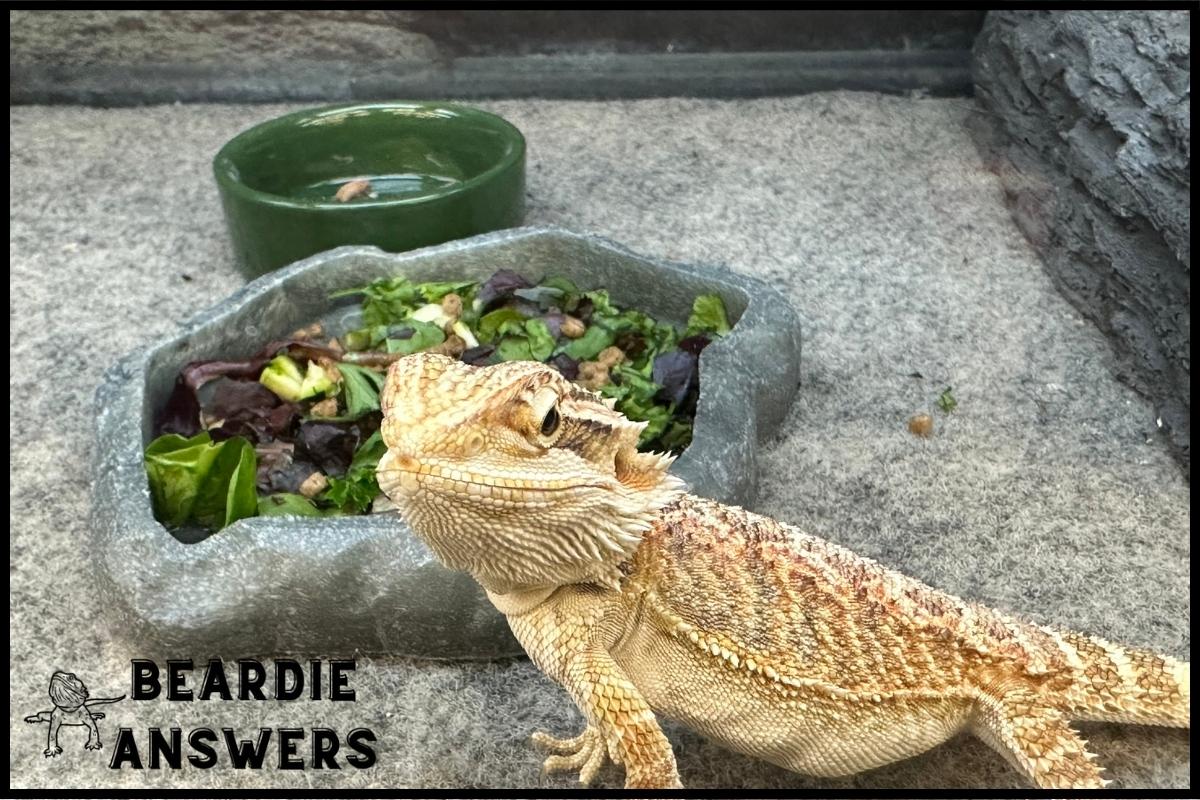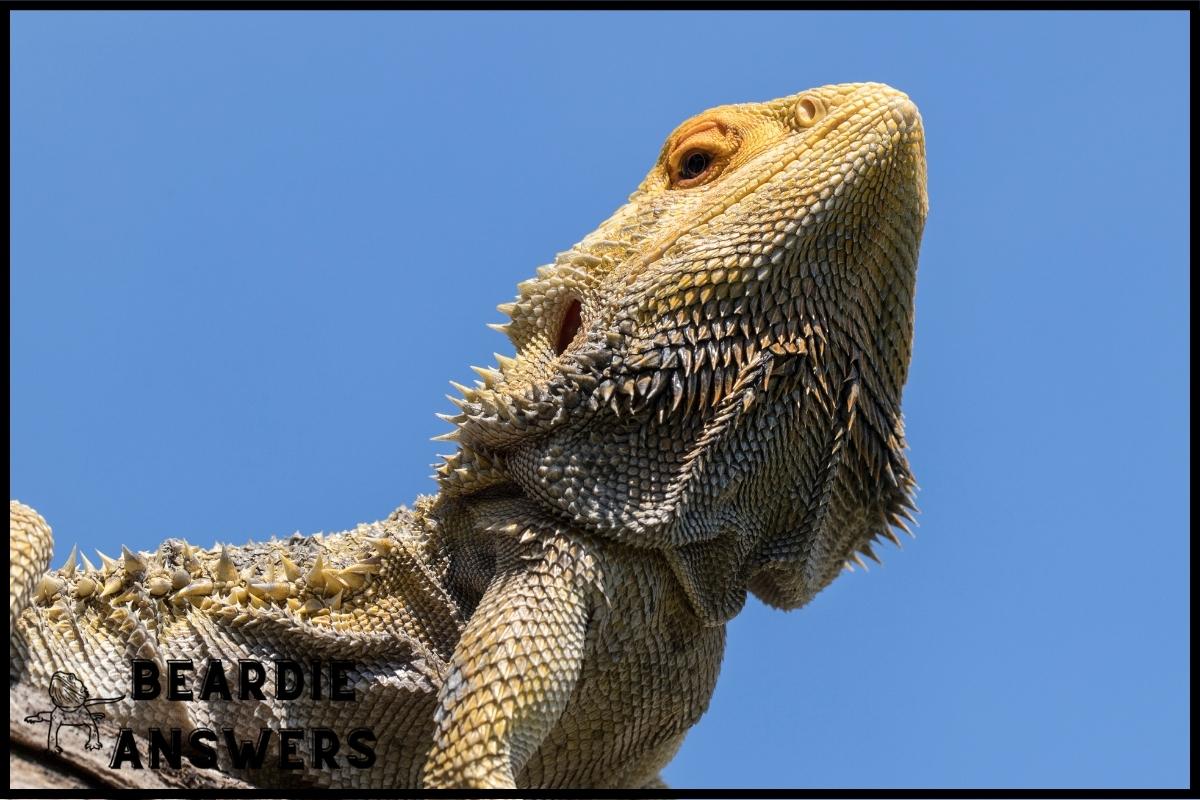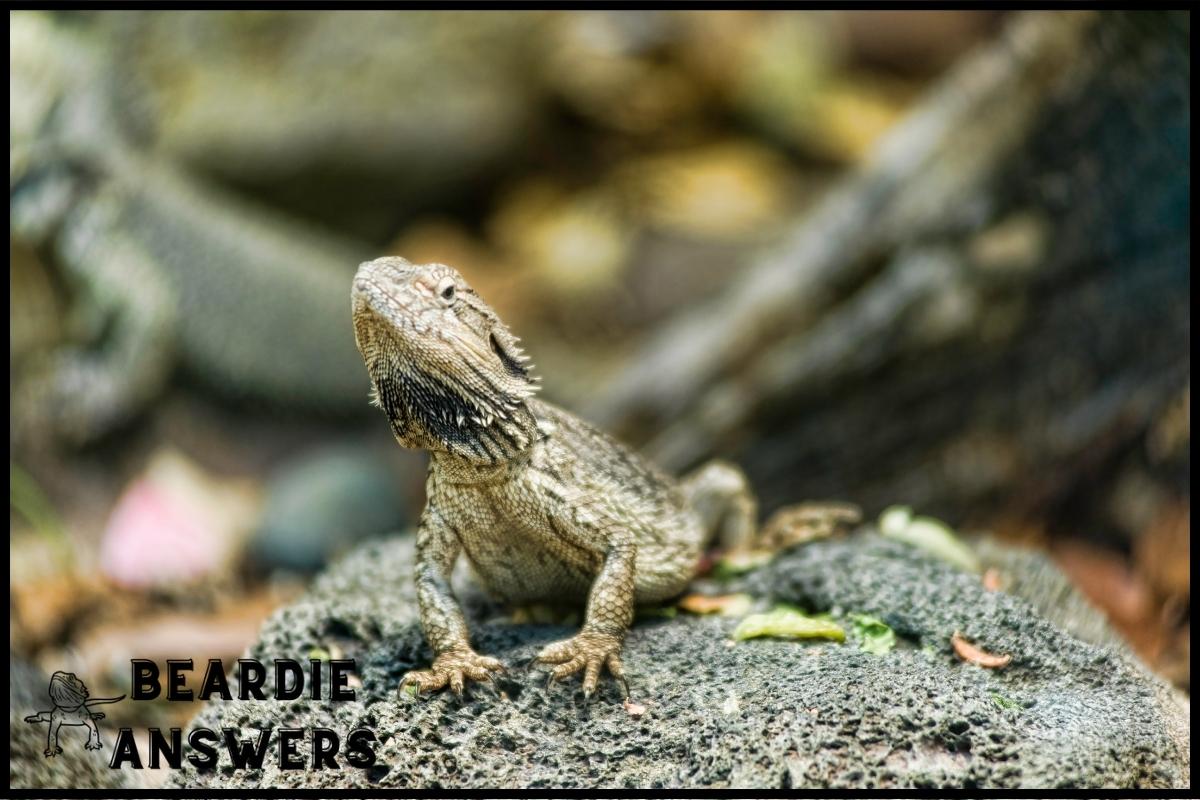[su_note note_color=”#eee”]
Bearded dragons are amazing creatures that go through several growth stages. From hatchling to juvenile, sub-adult and adult, the bearded dragon has a unique timeline of development.
The rate of growth depends on genetics as well as diet; however, understanding this process can help you take better care of your pet lizard.
In this article we’ll explore the different stages of bearded dragon growth, what to expect at each stage, and how to ensure they reach adulthood healthy and happy.
Additionally, we will look into how best to feed them depending on their age so they can get all the nutrients needed for optimal health throughout every stage in their life cycle.
With a little patience and dedication from owners, these fascinating animals can be cared for properly during their entire lives!
What You'll Learn
Life Cycle Of Bearded Dragons
Bearded dragons have a unique life cycle that begins shortly after they hatch, and spans over the course of several years. The environment in which they are housed is incredibly important, as it needs to be kept at an ideal temperature with adequate lighting to ensure healthy development. Additionally, habitat enrichment and proper handling techniques should be employed while meeting their nutritional requirements for successful growth and maturation.
Shedding is also part of the process in which new skin replaces old or damaged scales as bearded dragons grow bigger. This helps keep them healthy by allowing them to rid themselves of any parasites or diseases that may exist on their bodies. It’s important to provide a humid retreat during this period so their shedding can occur without disruption.
These measures must be taken into account when caring for bearded dragons throughout all stages of their lives, from babyhood through adulthood.
As they age, they will undergo additional changes that come along with each stage of growth such as differences in size, coloration and behavior; these characteristics will be discussed further in the next section.
Characteristics Of Different Stages
As bearded dragons continue to grow and develop, their needs change accordingly. An interesting statistic is that the average adult size of a bearded dragon can range from 16-24 inches in length! As they transition through each stage, it’s important to understand the unique characteristics of each phase so you can provide your pet with the best care possible.
When it comes to housing requirements for beardies, babies require smaller enclosures than adults. Their temperature needs also vary depending on age; hatchlings need a basking spot around 95 degrees Fahrenheit while adults should have temps ranging between 85-95 F.
In terms of shedding process, younger ones shed more frequently than older dragons as their skin grows faster. Bearded dragons breeding behavior differs based on gender; males display aggressive behaviors such as head bobbing while females become more docile when ready to mate.
Lastly, there are some variations in appearance between genders – male beardies tend to be larger and have thicker tails while female beardies usually have brighter colors and longer nails. Genetic variation plays an important role in determining how quickly a bearded dragon will reach maturity and its overall growth rate.
Genetic Variation In Growth Rate
Genetic variation plays a significant role in the growth rate of bearded dragons. Breeding selection can be utilized to increase or decrease the size of individuals, while temperature control and stress management are important factors as well.
Enclosure size also has an influence on growth rate; larger enclosures may provide more space for physical development, whereas smaller enclosures can lead to stunted growth due to close proximity with other dragons. Similarly, light cycles have been known to affect the speed of development among dragon species, providing them with optimal temperatures needed for their individual metabolism rates.
The complexity of these factors highlights the importance of proper nutrition and diet when raising bearded dragons. As each individual is unique in its genetic makeup, it’s essential that owners pay attention to dietary needs specific to their pet.
Proper Nutrition And Diet
Genetics may provide the basis for a bearded dragon’s growth rate, but proper nutrition and diet can have an even bigger impact on their development. To ensure your pet is getting the most out of each stage of its life cycle it’s important to understand their dietary supplementation needs.
Here are some key points to consider:
- Temperature Regulation: Bearded dragons need temperatures that range from 95°F (35°C) at night to 105°F (41°C) during the day to help with digestion and nutrient absorption.
- Habitat Setup: Make sure there’s enough space in your enclosure so they can move around comfortably. This will also encourage healthy activity levels which helps support optimal growth.
- Calcium Levels: A calcium supplement should be added to food or dusted on insects 2–3 times per week as these reptiles grow rapidly and require adequate amounts of calcium for strong bones and muscles.
- Feeding Frequency: Hatchlings should eat small meals 4–5 times per day while juveniles should feed 3–4 times daily until reaching full size when adults only need to eat once or twice a day.
The right combination of temperature regulation, habitat setup, calcium levels, and feeding frequency all play a role in helping young bearded dragons reach their full potential. With all these considerations taken into account you’ll be able to create the best environment possible for your reptile friend throughout its entire lifespan!
Care And Maintenance During Growth
It’s important to ensure your bearded dragon’s diet is healthy and balanced during its growth stages; they need a variety of proteins, greens, and insects. Providing a suitable habitat for your bearded dragon is also important; it should have plenty of heat and light, and a variety of substrates and hides. Finally, regular health checks are necessary during growth; look out for parasites, respiratory infections, and any signs of abnormal behavior.
Diet
When it comes to caring for your bearded dragon, diet is key! A balanced diet of live insects and vegetables helps them grow strong and healthy.
Be sure to provide a consistent source of heat as they require warm temperatures in order to digest their food properly. During the winter months, some dragons may choose to hibernate so make sure that you can keep track of their temperature needs during this time.
Additionally, social interaction is important for the development of these creatures, so ensure that your pet has plenty of chances to explore its environment with other bearded dragons or humans.
With proper care and attention, your bearded dragon will be happy and full of life!
Habitat
Once your bearded dragon’s diet is taken care of, it’s time to focus on the environment they will be living in.
Temperature control is critical for their health and development, so make sure that you use appropriate heat sources such as under-tank heaters or basking spots to maintain a comfortable temperature range.
Additionally, environmental enrichment should be provided by creating an enclosure with hiding places and climbing structures.
Finally, substrate selection can vary depending on whether you want something more natural like sand or if you prefer something easier to clean like newspaper or paper towels.
With the right habitat setup, your pet will have everything they need to thrive!
Health
Now that you’ve got your bearded dragon’s environment setup, it’s important to pay attention to their health in order to prevent disease.
Be sure that temperatures stay within the recommended range at all times and make sure they are shedding properly during this growth period.
If you notice any odd behavior or changes in appearance, contact a reptile veterinarian as soon as possible for advice.
Taking these preventive steps can help keep your pet healthy and happy!
Common Health Concerns
Bearded dragons are generally healthy animals, but there are some common health concerns to look out for. Shedding cycles can be problematic if the humidity levels in their cage is too low or if they haven’t been provided with enough water. It’s also important to monitor and adjust the temperature of your dragon’s habitat.
A diet full of variety and vitamins should be maintained at all times as this contributes greatly towards overall wellness. Also, it’s important to check regularly for any signs of illness such as discoloration, lethargy or loss of appetite.
Taking these precautions will go a long way in keeping your dragon happy and healthy.
Conclusion
I’m sure you’re now well-versed in the life cycle of a bearded dragon and all that goes into their growth stages. You know about genetic variation, proper nutrition, care, and maintenance to keep your pet healthy.
Now comes the fun part: watching them grow! As they move through each stage, you’ll notice changes in size, coloration, behavior, and more. It’s truly an amazing experience to observe the transformation from tiny hatchling to majestic adult.
But with great power comes great responsibility. Bearded dragons can live up to 15 years if taken good care of – so it’s important not to overlook any signs of health issues during their development process. Keep a close eye on your little one as they go through these crucial formative years!

Hi! My name is Bryan, I am the “one behind the words” here are BeardieAnswers.com. I believe that providing quality care and nutrition is the best way to ensure the health of your pet. Every beardie is special and deserves the best care and attention. If you have questions about your bearded dragon, please don’t hesitate to ask! View My Full Author Page




